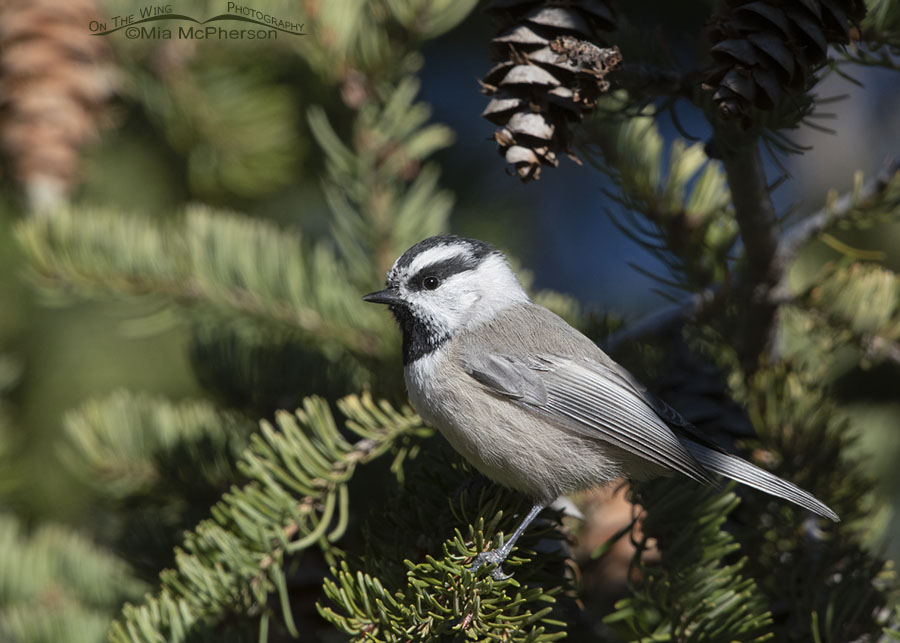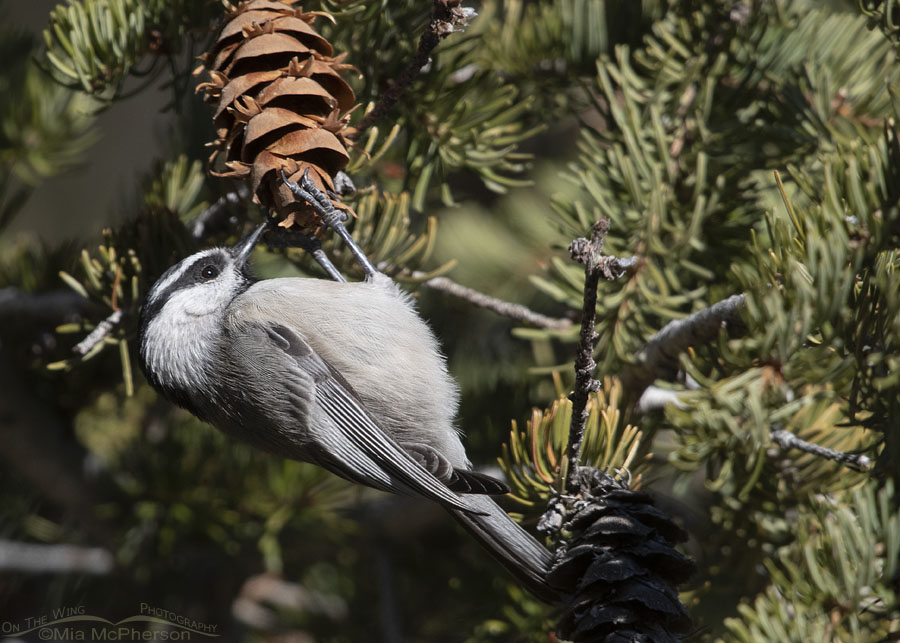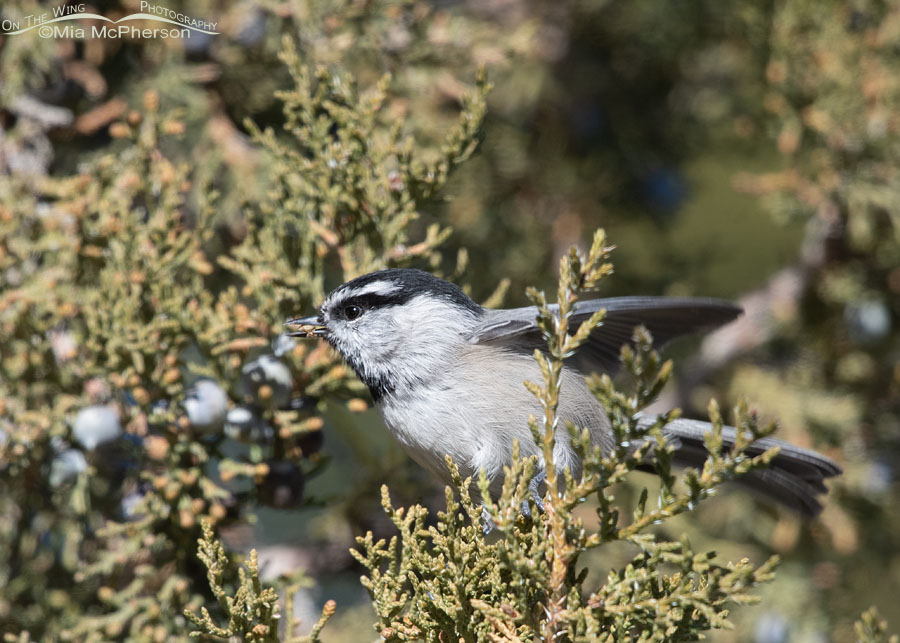 Mountain Chickadee resting for a moment – Nikon D500, f7.1, 1/1250, ISO 640, -0.7 EV, Nikkor 500mm VR with 1.4x TC, natural light
Mountain Chickadee resting for a moment – Nikon D500, f7.1, 1/1250, ISO 640, -0.7 EV, Nikkor 500mm VR with 1.4x TC, natural light
I listen for birds everywhere I go. Their calls and songs help me to locate them so I can photograph and observe them as they go about their lives.
I might even be a little annoying to other people because when I hear them singing or calling I typically say the name of the bird out loud which means that any birder, birdwatcher or bird photographer who is with me benefits from that.
 Mountain Chickadee grasping a fir cone with its feet – Nikon D500, f6.3, 1/1600, ISO 500, -0.7 EV, Nikkor 500mm VR with 1.4x TC, natural light
Mountain Chickadee grasping a fir cone with its feet – Nikon D500, f6.3, 1/1600, ISO 500, -0.7 EV, Nikkor 500mm VR with 1.4x TC, natural light
Mountain Chickadees can sound an awful lot like Black-capped Chickadees but to trained ears there are differences in their songs and calls.
At this time of the year Mountain Chickadees forage to eat and to cache seeds for the long winter days ahead. They aren’t nearly as vocal now as they are during spring mating season but they don’t stop vocalizing just because it has gotten colder.
Listen to a recording of a song of a Mountain Chickadee here and a call here.
 Mountain Chickadee with food in its bill – Nikon D500, f6.3, 1/1250, ISO 500, -0.3 EV, Nikkor 500mm VR with 1.4x TC, natural light
Mountain Chickadee with food in its bill – Nikon D500, f6.3, 1/1250, ISO 500, -0.3 EV, Nikkor 500mm VR with 1.4x TC, natural light
Some of the roads to the mountain canyons I go to when I am looking for Mountain Chickadees and other birds will be closing soon for the winter and I won’t be able to access them until spring. Until then I hope to visit them frequently so I can see and hear the Mountain Chickadees singing and calling as they go about the business of being birds.
Life is good.
Mia
Click here to see more of my Mountain Chickadee photos plus facts and information about this species.


The detail in these Chickadee pics is amazing! The composition and contrasts you captured are extraordinary. Thanks Mia.
Love these little guys, they are pretty feisty and brave, there are about 5 that trust me enough to eat out of my hand. The little birds, chipmunk and squirrel who live close by are such company and entertainment during theses times of isolation.
Your eyes and your ears (and your dedication) are a blessing to you. And to us.
Wonderful photos! I swear chickadees have velcro toes. The cold front brought some into my yard. They really like the homemade peanut butter suet.